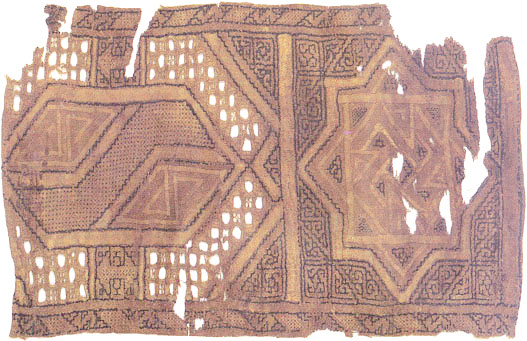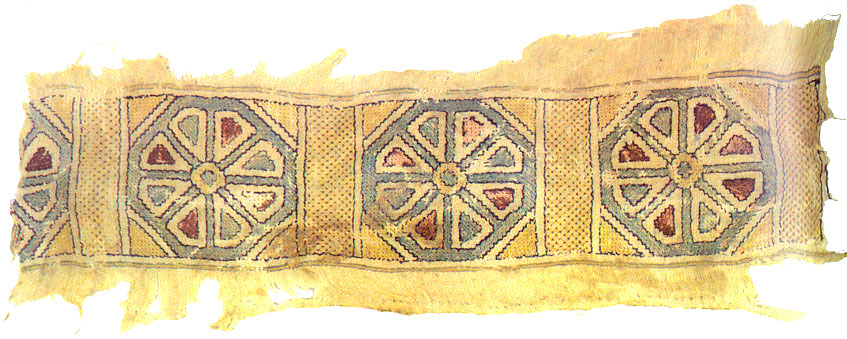
This embroidered fragment is from the late 14th or possibly the early 15th century. It measures 6-7/8" by 4-1/3". Originally it was not so dull and dark. The ground fabric is natural beige linen which once was much lighter in color. It is embroidered with indigo blue and yellow silk threads, which have also darkened with time.
The stitches used include satin stitch, double running stitch (typical of 16th century European blackwork), pulled thread by wrapping stitches in diagonal rows, and drawn thread work with needlewoven bars and picots. The neat edges of this fragment suggest that is was cut from a larger item before it was sold. What is was originally attached to is unknown.
This piece is in the Jameel Collection in the Ashmolean Museum.

This embroidered fragment is from the 15th century. It measures 11" X 3-3/8". The ground fabric is beige silk embroidered with yellow, blue-green, red-brown, and black silk threads. It is not entirely clear in this photo, but the vertical elements between the larger motifs are embroidered in yellow thread embellished with embroidered red-brown dots. A hem runs along the bottom of most of this fragment. Exactly what this embroidery was part of is unknown.
The source did not mention the stitches involved. From a careful look at the photo, it appears to include double running stitch for black outlines and pulled thread, similarly diagonally wrapped as in the fragment above, in yellow, blue-green, and red-brown, to fill the motifs. I cannot determine what stitch is used for the red-brown dots.
This textile is in the Museum of Islamic Art in Cairo, Egypt.